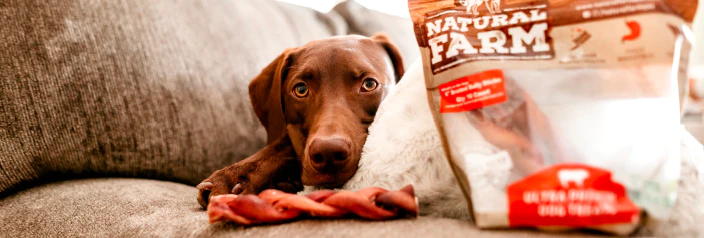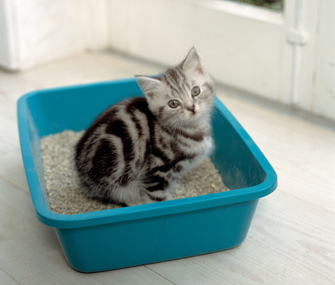Premium Tofu Cat Litter - Cheapest Clumping Tofu Cat Litter Manufacturer & Supplier
- Introduction to tofu cat litter
and its market growth - Technical advantages of clumping tofu cat litter
- Comparative analysis of leading manufacturers
- Customization options offered by manufacturers
- Case studies: Application of tofu cat litter in various scenarios
- Buying tips for sourcing cheapest tofu cat litter manufacturer
- Conclusion: Why tofu cat litter is a future-proof choice

(tofu cat litter)
The Rise of Tofu Cat Litter: Market Trends and Key Insights
Over the past decade, tofu cat litter has captured an increasingly large share of the global pet care market. This surge aligns with the rising consumer demand for sustainable, plant-based, and high-performing alternatives to traditional clay or silica litters. In 2023, the worldwide market value of tofu-based cat litter surpassed $350 million, reflecting a remarkable compound annual growth rate (CAGR) of 12.3%. This trend is driven by three key factors: eco-friendliness, reduced dust, and excellent odor control.
Pet owners are more informed and selective, preferring products that align with a greener footprint without sacrificing effectiveness. Consequently, both established companies and newcomers are investing in R&D to enhance the clumping capacity, absorption rate, and convenience of tofu cat litter. This article provides a comprehensive breakdown of the advantages, technologies, and manufacturers shaping this segment, as well as practical tips for buyers seeking the cheapest tofu cat litter manufacturer or tailored solutions.
Technological Innovations in Clumping Tofu Cat Litter
The technical evolution of clumping tofu cat litter is marked by its unique formulation and sustainable components. Unlike clay-based products, this litter is crafted from edible grade soybean residues, starches, and natural adhesives, enabling rapid absorption and strong clumping. Key performance indicators include clump formation (within 3 seconds), moisture absorption rate (250-350%), and dust-free qualities (less than 0.5% airborne particles).
Modern manufacturing processes incorporate advanced granulation, heat sterilization, and multi-stage sifting to ensure uniform particle size and minimal impurities. In addition, the integration of biodegradable scent-control agents and enhanced enzymatic deodorizers sets premium clumping tofu litters ahead of their competitors. These features collectively reduce daily maintenance for cat owners, while enabling easy disposal by flushing or composting.
Comparative Analysis: Leading Manufacturers in the Tofu Cat Litter Industry
With the escalating demand for plant-based cat litter, several manufacturers have emerged as industry frontrunners. These companies differentiate themselves through production capacity, R&D investment, global distribution, and proprietary technology. The following table compares three major clumping tofu cat litter manufacturers based on core technical attributes and pricing:
| Manufacturer | Monthly Output (tons) | Clumping Speed (seconds) | Absorption Rate (%) | Dust Level (%) | Minimum Order Price (USD/ton) | Customization Options |
|---|---|---|---|---|---|---|
| EcoKitty Bio | 1,500 | 2.5 | 330 | 0.45 | 860 | Yes |
| PureGreen Pet | 2,400 | 3.0 | 310 | 0.32 | 820 | Yes |
| NatureSoft Litter Co. | 2,000 | 2.8 | 345 | 0.41 | 780 | Partial |
This data reflects an evolving competitive landscape, where both volume production and technical innovation are key. For instance, NatureSoft Litter Co. excels in absorption and price, while PureGreen Pet delivers superior dust control. Customization flexibility varies, impacting the ability to develop private label or specialty formulations.
Customization: Factory-to-Buyer Solutions for Differentiated Markets
As the pet care sector diversifies, manufacturers recognize the need for product variation to serve a global buyer base. Customization ranges from scent profiles, granule size, and packaging design to unique additive blends that optimize performance in specific climates or address niche customer demands. Leading factories employ modular production lines capable of producing batches under precise parameter controls, supporting private label partnerships, and meeting regulatory standards across multiple jurisdictions.
Modern R&D teams collaborate directly with overseas distributors, retail chains, and brand owners to co-develop unique recipes—such as ultra-fine granules for kittens, hypoallergenic blends, or compost-certified formulas. These value-added options empower partners to distinguish their product offering and enter new market segments with confidence. Frequent innovations include natural anti-bacterial agents, color-coded granules, and target-specific fragrances.
Real-World Applications: Case Studies Across Diverse Markets
The flexibility and versatility of tofu cat litter have accelerated its adoption in a variety of use cases. These follow real-world application stories:
- Urban Pet Boutiques: A leading New York boutique replaced legacy bentonite products with ultra-premium clumping tofu cat litter. Customer satisfaction surveys showed a 28% increase in purchase repeat rates due to improved odor control and lower tracking. Waste management costs dropped as disposability improved.
- Large-Scale Shelters: In Tokyo, a municipal animal shelter trialed bulk tofu cat litter for over 300 cats. Results indicated a 35% reduction in litter consumption and a 42% decrease in cleaning time, with no loss of hygiene standards, yielding substantial operational savings.
- Online Retail Brands: A Singapore-based e-commerce company developed a signature blend featuring activated charcoal, leveraging customization services from a flexible manufacturer. Post-launch analytics revealed a 67% growth in first-time customers within six months, notably among environmentally conscientious pet owners.
These instances underscore tofu litter's adaptability to multiple business models, from brick-and-mortar retail to mass-supply environments and direct-to-consumer startups.
Guidelines for Sourcing the Most Economical Tofu Cat Litter Manufacturer
Securing supply from the cheapest tofu cat litter manufacturer requires a strategic approach that balances cost, quality, and service. Effective procurement involves vetting production credentials—such as GMP, ISO9001, and HACCP certifications—auditing sample quality, and confirming raw material traceability. Large buyers benefit from open-book negotiations and volume-based discounting, as well as integrating logistics agreements to minimize landed cost fluctuations.
Traceability systems, batch tracking, and robust after-sale support can further reduce operational risk. Insist on clear communication regarding lead times, minimum order quantities, and payment terms. Leveraging annual contracts or strategic partnerships may also unlock preferential rates, promotional bundles, or new product previews.
Conclusion: Future Prospects of Tofu Cat Litter and Industry Outlook
As sustainability continues to shape consumer choices, tofu cat litter stands out as a transformative solution combining environmental responsibility with outstanding functional performance. Key technical advances such as rapid clumping, high absorption, and negligible dust levels set new industry benchmarks. The combination of competitive manufacturer options, strong customization capabilities, and a proven track record in diverse market applications reaffirms its status as a future-ready commodity.
For buyers, embracing advanced plant-based litter is not just an ethical decision, but a strategic move to meet evolving regulatory, consumer, and operational demands. By forging reliable partnerships and leveraging innovation-driven vendors, businesses can ensure competitive differentiation and growth in a dynamic global pet care landscape.

(tofu cat litter)







